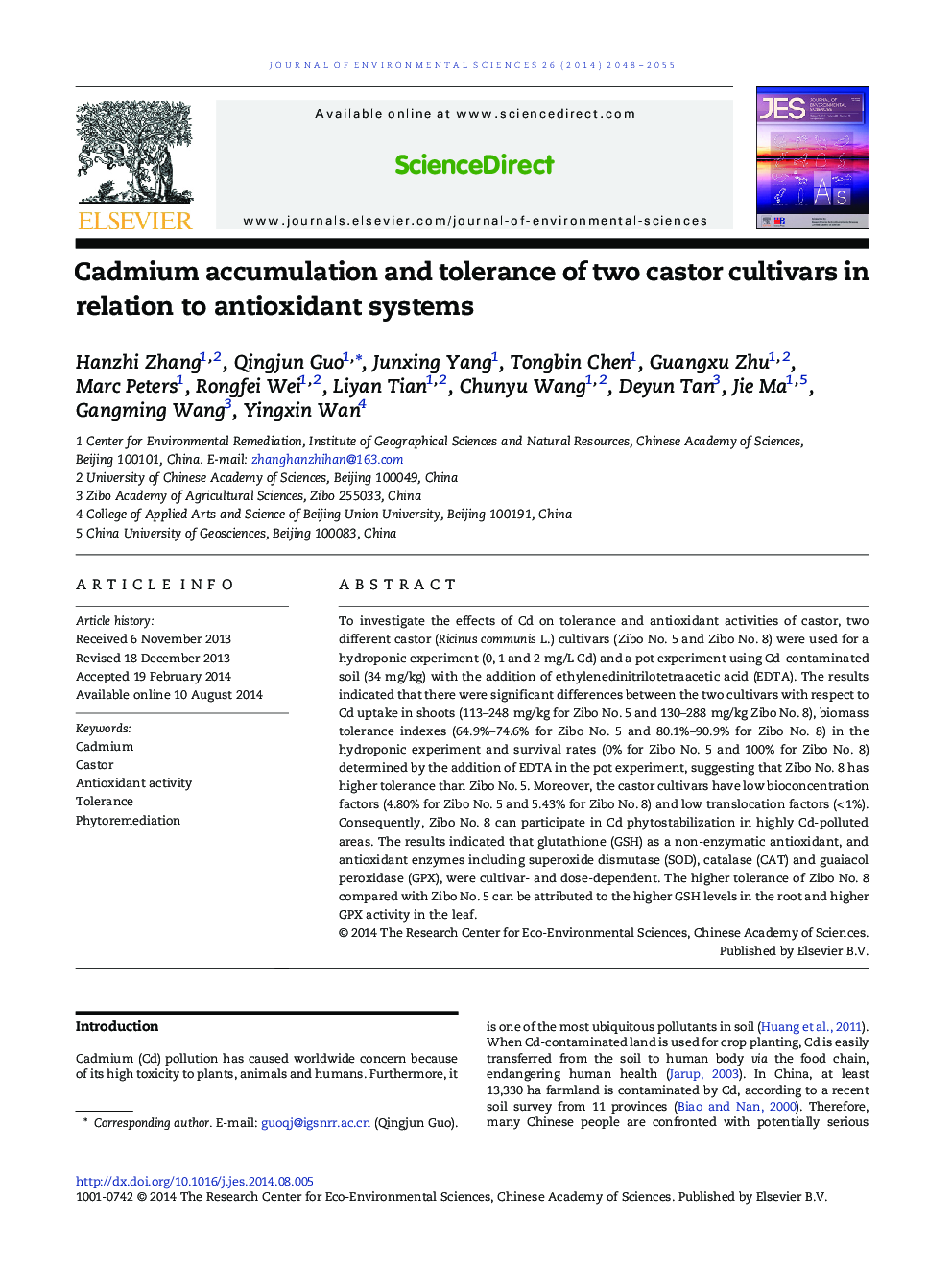| Article ID | Journal | Published Year | Pages | File Type |
|---|---|---|---|---|
| 4454398 | Journal of Environmental Sciences | 2014 | 8 Pages |
To investigate the effects of Cd on tolerance and antioxidant activities of castor, two different castor (Ricinus communis L.) cultivars (Zibo No. 5 and Zibo No. 8) were used for a hydroponic experiment (0, 1 and 2 mg/L Cd) and a pot experiment using Cd-contaminated soil (34 mg/kg) with the addition of ethylenedinitrilotetraacetic acid (EDTA). The results indicated that there were significant differences between the two cultivars with respect to Cd uptake in shoots (113–248 mg/kg for Zibo No. 5 and 130–288 mg/kg Zibo No. 8), biomass tolerance indexes (64.9%–74.6% for Zibo No. 5 and 80.1%–90.9% for Zibo No. 8) in the hydroponic experiment and survival rates (0% for Zibo No. 5 and 100% for Zibo No. 8) determined by the addition of EDTA in the pot experiment, suggesting that Zibo No. 8 has higher tolerance than Zibo No. 5. Moreover, the castor cultivars have low bioconcentration factors (4.80% for Zibo No. 5 and 5.43% for Zibo No. 8) and low translocation factors (< 1%). Consequently, Zibo No. 8 can participate in Cd phytostabilization in highly Cd-polluted areas. The results indicated that glutathione (GSH) as a non-enzymatic antioxidant, and antioxidant enzymes including superoxide dismutase (SOD), catalase (CAT) and guaiacol peroxidase (GPX), were cultivar- and dose-dependent. The higher tolerance of Zibo No. 8 compared with Zibo No. 5 can be attributed to the higher GSH levels in the root and higher GPX activity in the leaf.
